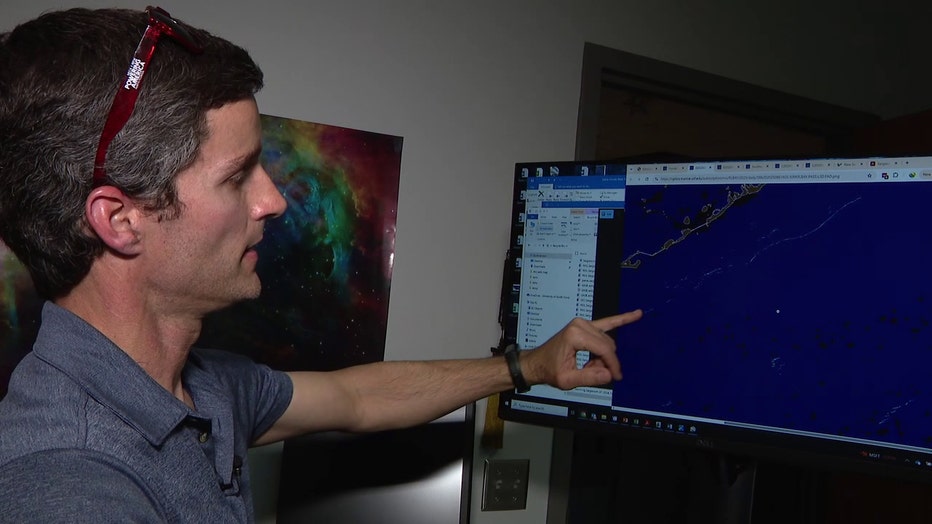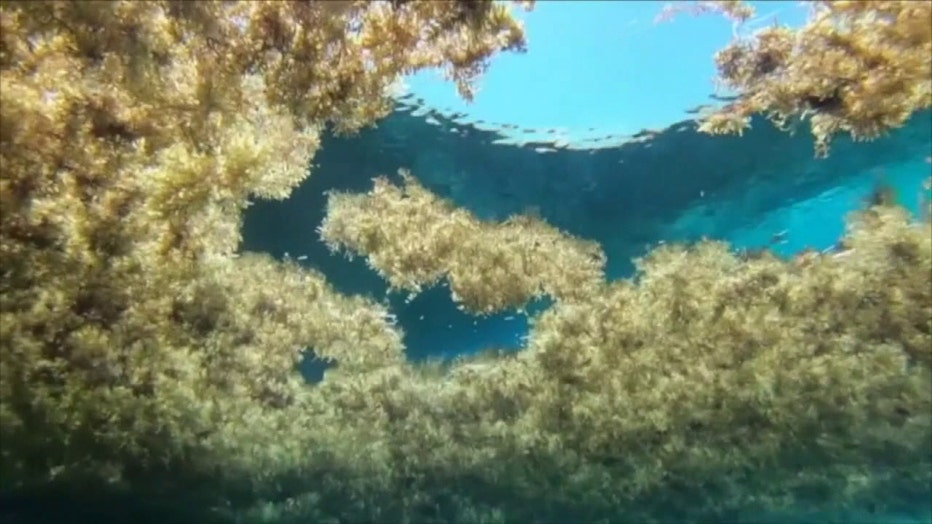USF researchers develop new tool to predict where sargassum seaweed washes ashore
ST. PETERSBURG, Fla. - With sargassum season here, it's only a matter of time before the seaweed washes up on shore, and University of South Florida researchers are developing a new tool to predict where it goes.
Big picture view:
Higher-resolution sensors from satellite imaging allow USF researchers like Brian Barnes to pinpoint sargassum seaweed like never before around Florida and the Caribbean.
READ: Mosaic to start pilot road project using radioactive waste material in Polk County soon
"Instead of saying, ‘hey there’s a lot of sargassum out in the ocean or out in the Atlantic that may impact Florida in a month or so,’ we can look and say that individual patch impact that particular beach in the coming days," said Brian Barnes, a research assistant professor with the USF College of Marine Science in St. Petersburg.

Dig deeper:
Barnes helped to develop the sargassum watch system to track and forecast where the algae’s headed. A five-year grant from NOAA in 2023 made that tracking tool possible. The tracking part is already available, but now they are adding forecasting using water current models going live with it as soon as next year.
"This first image is essentially a simulation showing where sargassum is now, and we can track over the next three and a half days where the sargassum will move," said Barnes, while demonstrating how the forecasting part of the tool will work.
Why you should care:
Sargassum floats on top of water, and it’s become a problem in recent years for coastal ecosystems and people.
"If you pick it up, it’s kind of prickly. It feels like a bunch of grass," said Barnes. "It starts to decay. It’s got a really terrible rotten egg smell to it. Some people, you have increased hospitalizations that kind of thing right from the respiratory distress, and it plays havoc on electronics. It’s got some heavy metals in it. Overall, it’s not really good to have on your beaches."

The west coast of Florida may not see a lot of sargassum wash ashore, like the Florida Keys and east coast of Florida, but it can impact who visits the state.
"It matters to any tourist area that may be impacted. The Florida Keys, for example, did a study of the impacts of a bad sargassum year with loss of tourism, to the cost of removing it and so forth, and it would be around $20 million for one single event," said Barnes.
MORE: Sarasota Bay sees 19% increase in seagrass despite Hurricanes Helene, Milton
That's a big number, so knowing where it’s going helps communities prepare.
"What we can do is, we can stage equipment to remove it quickly, or we can place some barriers that we can prevent it from hitting some of the more sensitive areas," said Barnes. "Don’t panic about sargassum but do take a look at our website, some of the other places that are providing information on sargassum and make your plans accordingly."
The Source: The information in this story was gathered during an interview with Brian Barnes, a research assistant professor with the USF College of Marine Science in St. Petersburg.
WATCH FOX 13 NEWS:
STAY CONNECTED WITH FOX 13 TAMPA:
- Download the FOX Local app for your smart TV
- Download FOX Local mobile app: Apple | Android
- Download the FOX 13 News app for breaking news alerts, latest headlines
- Download the SkyTower Radar app
- Sign up for FOX 13’s daily newsletter

